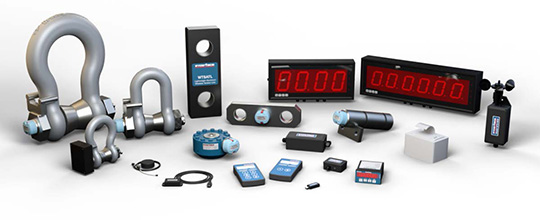Volume 27 | Issue 3
Click here to read the complete illustrated article or continue below to read the text article.
The space industry is no longer a niche sector dominated solely by government agencies. The advent of the space economy has catalyzed a new era where private enterprises are leading the charge in space exploration, technology, and sustainability. The space economy encompasses various sectors, including satellite communication, Earth observation, space tourism, launch services, space manufacturing, and space mining, among others. It involves both public and private entities, including government space agencies, commercial space companies, and research institutions.
We are also in the midst of a space renaissance, a period characterized by unprecedented advancements in space technology and exploration. This era is defined by the collaborative efforts of governments, private companies, and research institutions pushing the boundaries of what’s possible in space. At the heart of this evolution is the use of advanced force sensors. Force sensors, which measure the loads, forces, and stresses that spacecraft and their components endure, are critical in this new age of exploration.
Force sensors play a vital role in every aspect of space exploration. From the moment a spacecraft is designed, through its assembly, testing, launch, and operational phases, these sensors provide the precise measurements necessary to ensure safety and reliability. Whether it’s measuring the thrust of a rocket engine, the stresses on a spacecraft’s structure during launch, or the forces acting on landing gear as it touches down on a distant planet, force sensors are integral to mission success.
This is due to the fact that the space environment presents unique challenges that demand specific solutions designed for harsh conditions. These solutions include load cells, torque transducers, and multi-axis sensors, all designed to withstand the extreme conditions of space. For example, load cells are often used in rocket structure testing, where they measure the immense forces that a spacecraft endures during launch.
These sensors are critical for verifying the structural integrity of spacecraft and ensuring that they can withstand the stresses of space travel. These sensors not only test structural integrity in the design and development phase, but also in real world testing like within high powered wind tunnels and simulated launches. Included below is a real-world example of what this type of test looks like.
NASA’s Space Launch System (SLS) core stage was the largest ever built at 27 feet in diameter and 200+ feet tall. Due to the immense size, core components including liquid hydrogen and oxygen tanks needed to be tested to ensure they could withstand launch loads up to 9 million pounds-force (lbf). To do this, load cells were attached to hydraulic cylinders at various locations along test stands to provide precise test forces. Strain gages bonded to rocket structure surface and connected to data acquisition system for stress analysis. Using this test solution, engineers were able to measure loads applied at various areas on the rocket structure, verifying the structural performance under simulated launch conditions.

Accurate testing and simulation are also essential for the development of reliable spacecraft. Force sensors are used extensively in these processes to replicate the conditions that spacecraft will face in space. For instance, in spacecraft docking simulations, Wireless Load Cells are used to measure the forces exerted by actuators during docking maneuvers. This data ensures that the spacecraft can dock safely and securely, without exceeding the structural limits of its components.
Force measurement tools also serve many purposes outside of spacecraft testing in the aerospace industry. One unique application of force measurement is for systems that provide a full range of natural motion for a realistic simulation of reduced gravity environments. The system would be used to simulate weightlessness so astronauts’ crews could learn how to handle microgravity activities, including walking, running, and jumping. The system could also be used for surface operation studies, suit and vehicle development, robotic development, and mass handling studies.
Sustainability is also a growing focus in space exploration, with initiatives like space farming and resource mining gaining traction. Force sensors play a critical role in these efforts by providing the precise measurements needed to optimize processes and reduce waste. For example, in space-based vertical farming, Platform Scale Load Cells can be used to monitor the weight of produce as it is harvested by robotic systems. This ensures that the harvesting process is efficient and that resources are used effectively. Included below is a real-world example of this process.
Vertical farming is the production of produce in a vertical manner using smart technology systems. Automated mechanics are used to pick up and move the products, thus using less human involvement and possible contamination – making this a great option for agriculture in space. In order to accurately test and monitor this solution, a wireless force measurement system is needed to monitor the robotics that pick up and move the produce to their next destination of the packaging process. The monitoring system included platform scale load cells, along with Wireless Strain Bridge Transmitter Modules, in the center of the platforms of the robotic lifting system that move around the produce. The strain bridge transmitter wirelessly transmits the data collected from the loa cells to a data display device. Using this solution, the vertical farming user can successfully detect and monitor the produce platform for their robotic lift system, and navigate the produce to the next step of their packaging line.
As the space economy continues to grow, the demand for precision measurement solutions will only increase. Force sensors will remain at the forefront of this growth, enabling new advancements in space exploration, technology, and sustainability. Whether it’s supporting the development of next-generation spacecraft, facilitating the exploration of distant planets, or enabling sustainable practices in space, force sensors will play a crucial role in shaping the future of space.
Force sensors are indispensable in the space industry. They ensure the safety, reliability, and efficiency of space missions by providing the precise measurements needed to navigate the complexities of space. As the space economy expands, the importance of these sensors will only grow, making them a cornerstone of the future of space exploration.

About the Author:
Keith Skidmore brings a unique blend of technical expertise and interpersonal skills to his role as Custom Solutions Director at Interface. With a deep-rooted passion for understanding how things work, Keith has spent his career mastering the art of connecting customers with critical force measurement solutions.
Keith’s academic foundation was laid at The Ohio State University, where he earned a Bachelor of Science in Mechanical Engineering in 1994. His career started at Sensotec in Ohio, but a desire for warmer climates led him to Arizona, where he joined DH Instruments as a Regional Sales Manager. Here, he honed his skills in selling pressure calibration equipment, which eventually sparked his interest in Interface’s innovative load cell and sensor technology.
In 1996, Keith joined Interface as a Senior Application Engineer, where he quickly became instrumental in working with a broad spectrum of industries, including aerospace, industrial automation, testing labs, automotive, and medical technology. After a decade with Interface, Keith expanded his horizons as a Measurement Application Engineer with Measurement Solutions, gaining a fresh perspective on the sales process from an outside representative’s viewpoint. In 2016, he returned to Interface as the Regional Sales Director and works today as Interface’s Custom Solutions Director and resident Chief Applications Engineer.
Scott Ellyson, CEO of East West Manufacturing, brings decades of global manufacturing and supply chain leadership to the conversation. In this episode, he shares practical insights on scaling operations, navigating complexity, and building resilient manufacturing networks in an increasingly connected world.